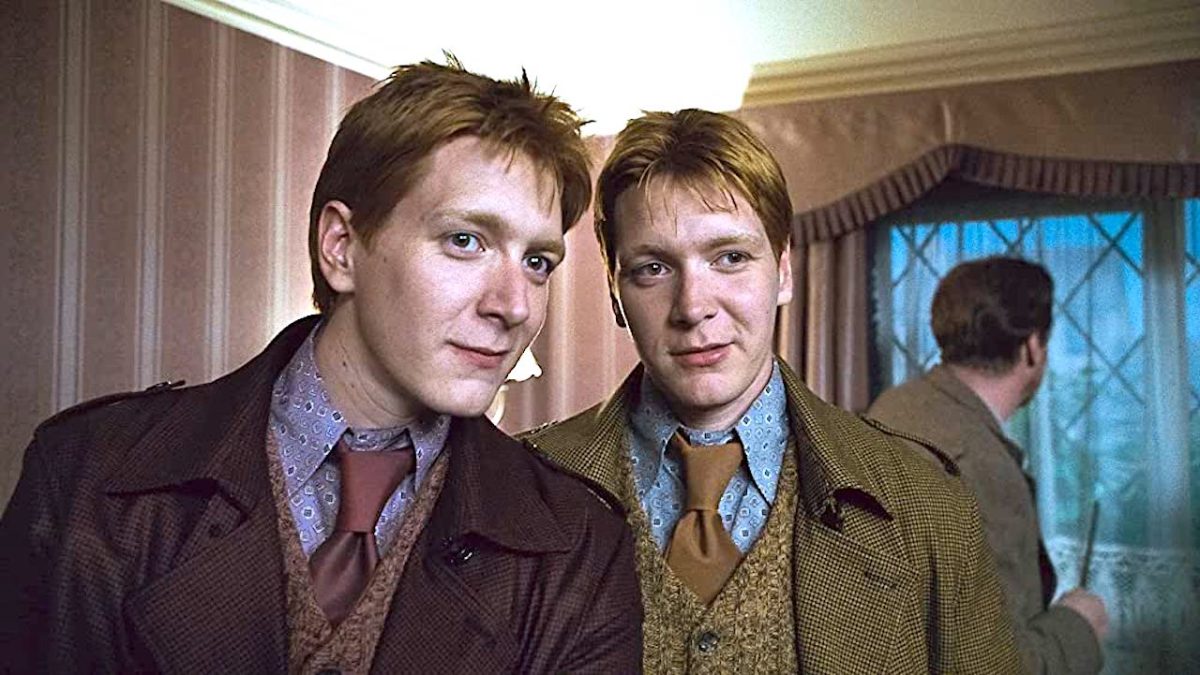There is no shortage of death in the Harry Potter series. From Professor Quirrell in Sorcerer’s Stone all the way to Lord Voldemort in Deathly Hallows, this children’s story dragged the possibility of death around like a weighted blanket. The Battle of Hogwarts in some ways was the culmination of all that death, as it gave way to the vanquishing of He-Who-Must-Not-Be-Named. That being said, it did not come without its cost. As spells whizzed past each other and war broke out all over the school grounds, we watched Death Eaters shoot killing curses at innocent kids, at our favorite characters, and we held our breath and prayed that our favorites would make it out alive.
J.K. Rowling spared no punches in the creation of this battle, forewarning fans that in order to convey the gravity of the situation, there would have to be carnage. It’s a decision, although sad, we can respect. Unlike the ending to another popular film franchise about vampires who sparkle in the sunlight, the Harry Potter author swung her billion-dollar ax, and while we appreciate the creative decision, it sucked that it met the neck of one of our favorite Weasley twins, Fred.
How did Fred Weasley die in the movie?
Fred’s death was not drastically altered in the movie adaptation of the Battle of Hogwarts, but there was noticeably less screen time than the canon it was based on. In Deathly Hallows Part 2, as war rained down on everyone, we saw glimpses of carnage happening all around the school grounds, like the disturbing clip of Lavender Brown being mauled by Fenrir Greyback. Here we might’ve expected to see Fred, to watch his final moments play out in real-time, but the moment never came. Instead, after Voldemort called off his Death Eaters and silence fell upon the castle, those still standing picked themselves up and began the brutal process of discovering who had survived and who had not.
This is how we discovered Fred’s death. We walked with Harry, Ron, and Hermione into the Great Hall and saw the Weasley family huddled around the limp body of Fred Weasley, with fresh tears in their eyes. We never saw how it happened, we only saw the aftermath. This was, to some fans, as cruel as the death itself, as many heartily believed we should’ve been with Fred in his final moment, all the way to the bitter end.
How did Fred Weasley die in the books?
In the book, Fred and George guarded Hogwart’s secret passageways as Death Eaters forced their way through the magical barrier and into the school grounds. Their brother Percy, who spent the previous three books stiff-arming the family, came to their aid, and the reunion gave the scene an emotional weight that made the subsequent moment all the more shocking. Fred turned to say something to George, and as he did, an explosion cut him off, and everyone (Fred, George, Percy, Harry, Ron, and Hermione) went flying through the air in different directions.
Buried underneath the rubble and debris, Harry struggled to his feet, and heard “a terrible cry that pulled at his insides.” Percy was on the ground, shaking Fred’s lifeless body. The rubble that had showered down on them killed Fred instantly. Rowling’s word choice in this scene is haunting as she describes Fred’s eyes as “staring without seeing.” We held back our own tears as Harry helped move Fred’s body to the Great Hall, where the Weasley family discovered that one of their boys had been killed.
Was Fred’s death foreshadowed?
In Deathly Hallows Part 1, we get the best flight battle in the series when the Order of the Pheonix concocts a plan to get Harry safely to the Burrow. The battle, enjoyable as it was to watch, was not without its fatalities. Mad-Eye Moody was devastatingly killed by Voldemort, and George’s ear was decapitated at the hands of Snape.
George’s decapitation (which we later learn was done by Snape to protect him from the killing curse of another Death Eater) was foreshadowing at its finest. Seeing one of the Weasley twins bloody and decapitated primed us for the idea of death. We all knew someone would die in the Battle of Hogwarts, but Fred’s hit so hard because we had already exhaled a sigh of relief earlier in the story when George made it out alive. Still, after all these years, we’re saddened by the thought of George continuing on without his brother, assuaged only by the knowledge that he ended up naming his son after his once-best friend and twin, ensuring that Fred is always with him.

